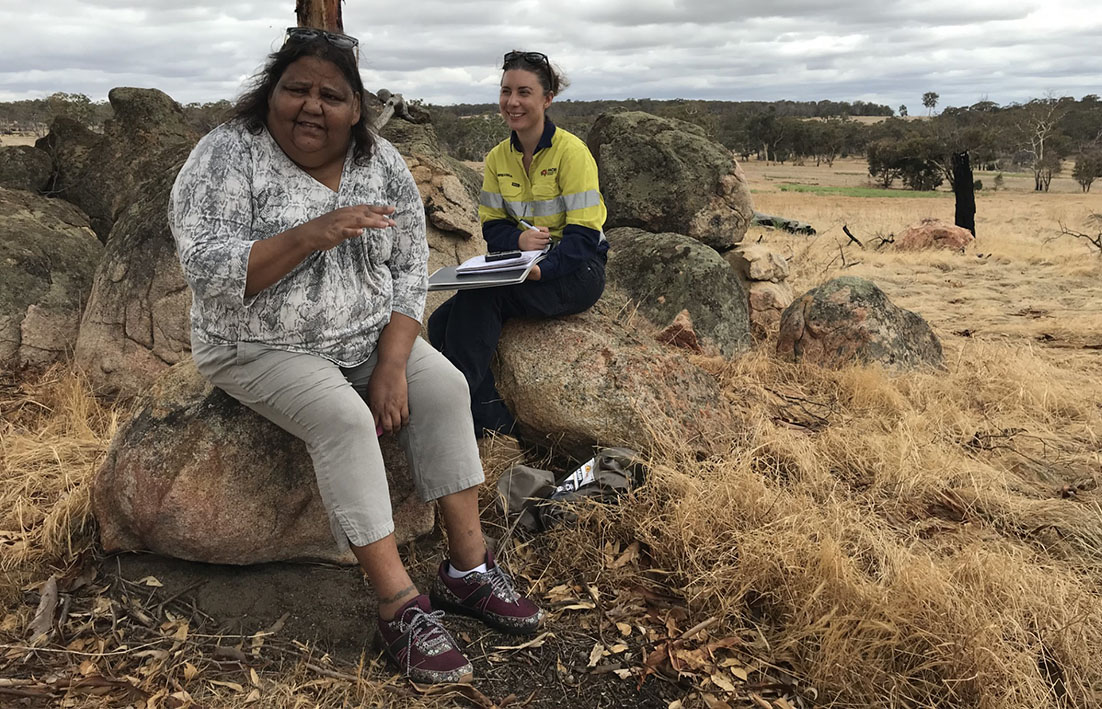
BARLADONG Noongar Elder Dr Marion Kickett, along with 13 of her cousins, met with the chair of the EPA Appeals Committee last week, Dr Garry Middle, with a clear message: “We don’t want a tip at Allawuna Farm”.
She has also rejected claims that local Indigenous groups have been properly consulted over the planned landfill at Allawuna Farm, located on the Great Southern Highway.
Dr Kickett represents some of the descendants and grandchildren of Thomas Kickett Junior and his wife Josephine Blurton, formally of the York reserve.
“Last week was the first time we have been consulted over the more than 12 years since the tip was first proposed, and as the traditional Barladong Noongar custodians of York, we have traditional, historical, and contemporary links and a strong connection to York,” she said.
Dr Kickett said she was told the appeals committee has spoken to three local Elders, which they wouldn’t identify or confirm how they were selected, and felt that was inappropriate as wider consultation should have occurred.
“Our grandmother Josephine gave birth to a number of her children on the Thirteen Mile Brook as did many other Aboriginal women during the 1930s and 1940s. Some babies survived and some died and were buried on the banks of the Thirteen Mile Brook,” she said.
“Oral history was shared by our aunties about the traditional Barladong birthing practices including rituals and ceremonies performed. Oral stories were told to us by our grandparents, parents, uncles and aunties about the importance and sacredness of waterways such as Thirteen Mile Brook and Wambyn (Aboriginal name) otherwise known as Saint Ronans Well.
“We do not want any disturbance of these traditional sites. We do not want any disturbance of our sacred dreaming the Waagle (serpent) that we traditionally believe created and continues to maintain the water ways surrounding Allawuna Farm.”
“We have spiritual connections to country. If children died during childbirth they were buried there – we don’t want the area disturbed, they are disturbing our sacred areas of our birth and burial site.
“The site has been used for probably thousands of years as a place where women give birth. Some babies have died at the site during birth and the placentas of babies that do not die are usually buried there.”
She said the site was used in more recent times when Aboriginal women were not allowed to give birth in the local hospital.
Dr Kickett said her group were never consulted over the tip proposal, as traditional custodians of York and surrounding areas.
“The Environmental Protection Authority of Western Australia does not appear to understand the geography of the area. Why does it refer to the Helena River which goes nowhere near the proposed development site,” she said.
“Why does the EPA say that it ‘does not consider there to be a material risk to Aboriginal heritage’ and then contradict itself by recommending a condition to avoid disturbance of an Aboriginal cultural heritage site?” Dr Kickett said.
She said the EPA positively states and seems to accept that the proponent consulted with three local elders.
Dr Kickett has written to Dr Middle and asked if the developer provided further factual information about this to the EPA in its submissions which have not been disclosed to her as a petitioner?
“I maintain my ground of appeal and will not acompromise. I liken this to the destruction of the Juukan George in the Pilbara and the breach of trust placed on Aboriginal Traditional Owners,” she said.
“To us this proposal is disturbing our sacred areas, you wouldn’t place a tip on a cemetery would you?”
She said she was currently taking steps to get the site heritage listed.
A final decision by Environment Minister Reece Whitby is still pending with his office still unable to confirm a date, despite the fact that submissions closed almost a year ago.